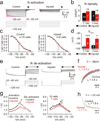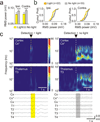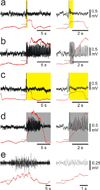Closed-loop optogenetic control of thalamus as a tool for interrupting seizures after cortical injury
- PMID: 23143518
- PMCID: PMC3700812
- DOI: 10.1038/nn.3269
Closed-loop optogenetic control of thalamus as a tool for interrupting seizures after cortical injury
Abstract
Cerebrocortical injuries such as stroke are a major source of disability. Maladaptive consequences can result from post-injury local reorganization of cortical circuits. For example, epilepsy is a common sequela of cortical stroke, but the mechanisms responsible for seizures following cortical injuries remain unknown. In addition to local reorganization, long-range, extra-cortical connections might be critical for seizure maintenance. In rats, we found that the thalamus, a structure that is remote from, but connected to, the injured cortex, was required to maintain cortical seizures. Thalamocortical neurons connected to the injured epileptic cortex underwent changes in HCN channel expression and became hyperexcitable. Targeting these neurons with a closed-loop optogenetic strategy revealed that reducing their activity in real-time was sufficient to immediately interrupt electrographic and behavioral seizures. This approach is of therapeutic interest for intractable epilepsy, as it spares cortical function between seizures, in contrast with existing treatments, such as surgical lesioning or drugs.
Figures








Comment in
-
Epilepsy: shining a light on seizure control-optogenetic approach shows promise for treatment and prevention of epilepsies.Nat Rev Neurol. 2013 Jan;9(1):1. doi: 10.1038/nrneurol.2012.256. Epub 2012 Dec 11. Nat Rev Neurol. 2013. PMID: 23229406 No abstract available.
References
Publication types
MeSH terms
Substances
Grants and funding
LinkOut - more resources
Full Text Sources
Other Literature Sources
Medical

